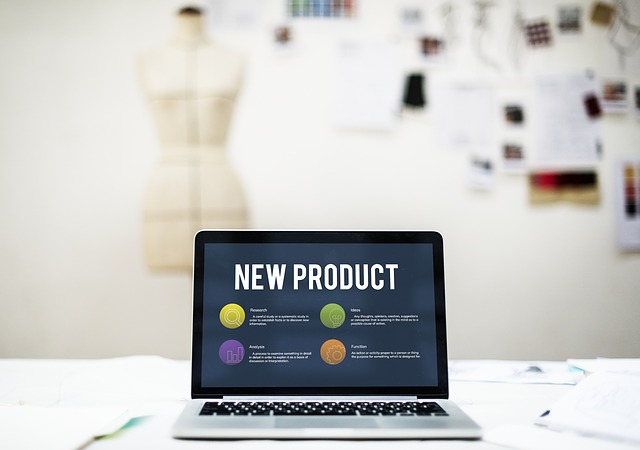 Press releases likely come to mind as a standard tool for announcing a new product or feature. These days, though, press releases lack the power they once had for launching new products. Companies, including startups, planning a product launch often underestimate the value of social media. By using a variety of social media approaches and platforms, a marketing team can build extraordinary awareness and excitement about a forthcoming product in most any product category from fashion to software. You don’t need strong relationships with large media outlets, an extravagant budget or a famous brand name.
Press releases likely come to mind as a standard tool for announcing a new product or feature. These days, though, press releases lack the power they once had for launching new products. Companies, including startups, planning a product launch often underestimate the value of social media. By using a variety of social media approaches and platforms, a marketing team can build extraordinary awareness and excitement about a forthcoming product in most any product category from fashion to software. You don’t need strong relationships with large media outlets, an extravagant budget or a famous brand name.
These are some proven ways social media can build “buzz” for the introduction of new products or product features. In all cases, it’s best to focus on what’s innovative in the new product design.
Quick teasers. Rather than showing a complete demonstration, build hype with a quick glimpse of the product and a few key details. Creating a sense of mystery can build excitement. OnePlus, a mobile company, posted the number hours left before its product launch.
Target specific users. Social media advertising allows marketers to reach specific users. Facebook and Instagram in particular offer robust targeting capabilities, says Brian Peters, digital marketing strategist at Buffer. Organizations can reach specific users based on a range of demographic factors, interests and other factors. Ask people to complete a simple form to receive something, such as updates about the launch or a free trial.
Live streaming. With live streaming now available on social media channels such as Facebook and Instagram, and anticipated for LinkedIn, brands can live stream product introductions and demonstrations on social media. Soon after InVision’s initial announcement on Facebook about its new design tool, it live streamed a product demo with a strong CTA to “Be the first to access InVision Studio.”
Host a Twitter Party. A Twitter party is a one-time Twitter chat that celebrates a launch of a new product or other endeavor, recommends Ann Smarty, brand and community manager at Internet Marketing Ninjas. They often celebrate a new book but a Twitter party can be used for any product launch.
Create quizzes. Quizzes can lead the user down the conversion path in an unobtrusive and playful way, Smarty says. They can also spread easily online when done right. Wyzerr is a good tool for building interactive quizzes.
Behind-the-scene views. Telling the brand’s story with behind-the-scene views can create interest and empathy. “Is your team spending long days and nights agonizing over the details of your upcoming launch? Share this experience on your social network of choice,” says Lucy Hitz at Sprout Social. “When people see your struggle and passion, they are more likely to become invested in your success—and, ultimately, buy your product.” This approach works only when you’re close to launch. Otherwise you’re telegraphing your innovations to competitors.
Offline events. An offline event can energize the social media marketing campaign. Company staff, influencers and others can produce valuable images and other content from offline events and share them on social media. Make sure that decor is attractive, or “Instagramable,” and that the venue has great natural light. “Influencers will be more likely to post about your event without payment if you create a beautiful backdrop that looks great on their feed, too,” says content marketer Taylor Loren at marketing platform Later.
Influencer marketing. A social media monitoring and measurement tool can identify ideal influencers for brands, what content they share, and how widely their content spreads across the internet. Be sure to vet influencers to make sure they can be trusted to post appropriate and compelling content. Give your product to micro-influencers in your niche ahead of the launch and encourage them to post it. Have all of your influencers post on the same day.
Measure Your Social Media Success
After the launch, review how well the campaign met its goals. Also, consider possible areas for improvement. “For example, you can glean insights about your followers’ preferences and what content resonated best with them, what medium they liked most, and what channel performed best,” Loren says.
Most social media channels offer their own native analytics that report basic metrics, but they often lack robust analytics. A media monitoring dashboard that integrates all forms of media saves time, provides real-time access, displays a comprehensive view of performance, and makes it easier to analyze and interpret data.
Bottom Line: Press releases lack the power they once had for announcing new products. These days PR and marketing professionals can use social media to build excitement about an impending new product. Anticipation may be so strong, customers will be eagerly ordering the product immediately.
William J. Comcowich founded and served as CEO of CyberAlert LLC, the predecessor of Glean.info. He is currently serving as Interim CEO and member of the Board of Directors. Glean.info provides customized media monitoring, media measurement and analytics solutions across all types of traditional and social media.




